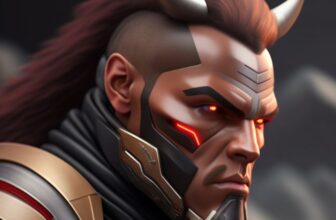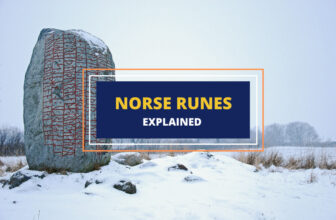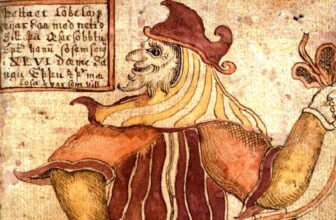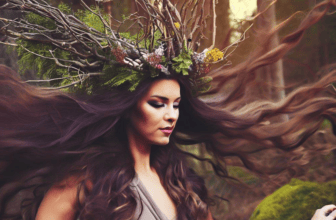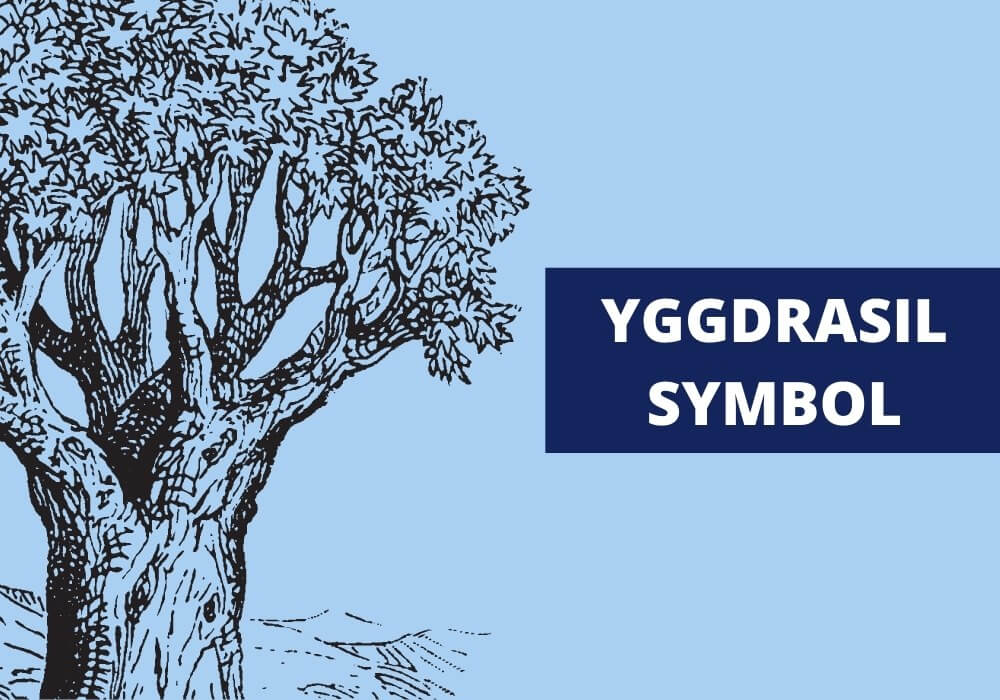
Table of Contents
The mighty tree Yggdrasil is one of the most recognizable symbols from Norse mythology. Many ancient cultures and religions worship trees but few do it quite like the Norse people.
In the ancient Germanic and Scandinavian myths, Yggdrasil was the World Tree – an immense ash tree that stood at the center of the cosmos and connected with its branches and roots the various worlds and realms the Norse believed existed.
The tree is best known from the Prose Edda by Snorri Sturluson. In both sources, Sturluson assembled several different Norse myths and legends, and in all of them, Yggdrasil held the same holy status.
Why was the Yggdrasil so important in Norse culture and what exactly did it symbolize? Let’s take a closer look.
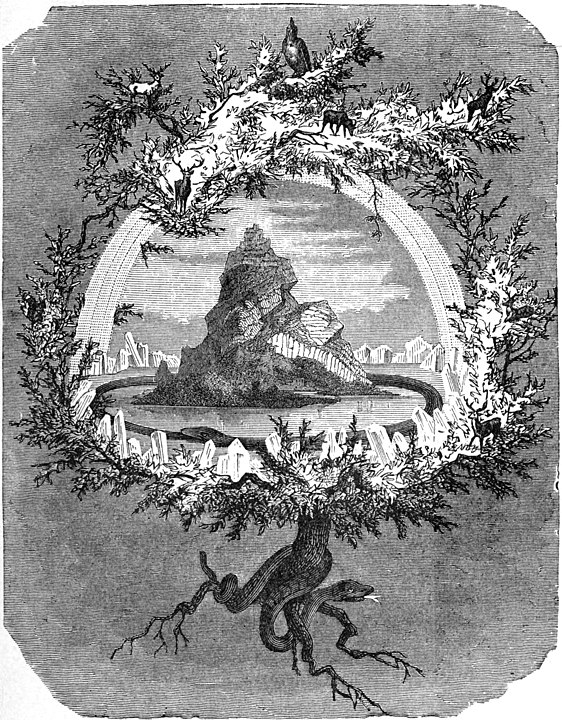
What is the Yggdrasil?
According to Norse mythology, there are Nine Worlds, connected by the Yggdrasil which is situated in the center. It’s believed to be a massive ash tree that holds these worlds in place, and as such, is considered highly important and holy.
There are several theorized meanings of the term “Yggdrasil” even though its generally accepted that Yggdrasil is the World Tree. However, there are several theories on the exact meaning of the term.
Odin’s Gallows Theory
Most experts support the consensus that the term means Odin’s horse, meaning Odin’s gallows.
This can seem bizarre at first, but:
- Ygg(r) = one of Odin’s many names throughout the various Norse myths and means Terrible
- Drasill = horse (but is used in the context of gallows or tree)
The connection between horses and trees is that in the Poetic Edda poem Hávamál Odin hanged himself from a tree, making that tree “his gallows”. And since gallows can be described as “the horse of the hanged”, the tree Odin sacrificed himself on is believed to be Yggdrasil or “Odin’s gallows/horse.”
Odin’s Horse Theory
Some scholars believe that Yggdrasil does indeed mean “Odin’s horse” but not in the sense of his gallows. Instead, they think the full term for the tree is askr Yggdrasil where askr means ash tree in old Norse. In other words, askr Yggdrasil would mean “The world tree to which Odin’s horse is bound”.
The Yew Pillar Theory
Another theory comes from F. R. Schröder. According to him, the term comes from yggia or igwja, which means “yew-tree”, a common species of European berry tree. Drassil, on the other hand, may be from dher which means “support”. That would make Yggdrassil the “yew pillar” of the world.
The Terror Theory
A fourth option is proposed by F. Detter who suggests that Yggdrasil comes from the word yggr or “terror” and isn’t’ a reference to Odin at all.
Assuming that drassil still holds the same horse/gallows meaning, Yggdrasil can be seen to mean tree/gallows of terror. What’s missing in this theory is that the connection between horses and gallows is supported by Odin hanging himself in the widely accepted theory.
Still the horse of the hanged description of gallows is common enough for this theory to be possible as well.
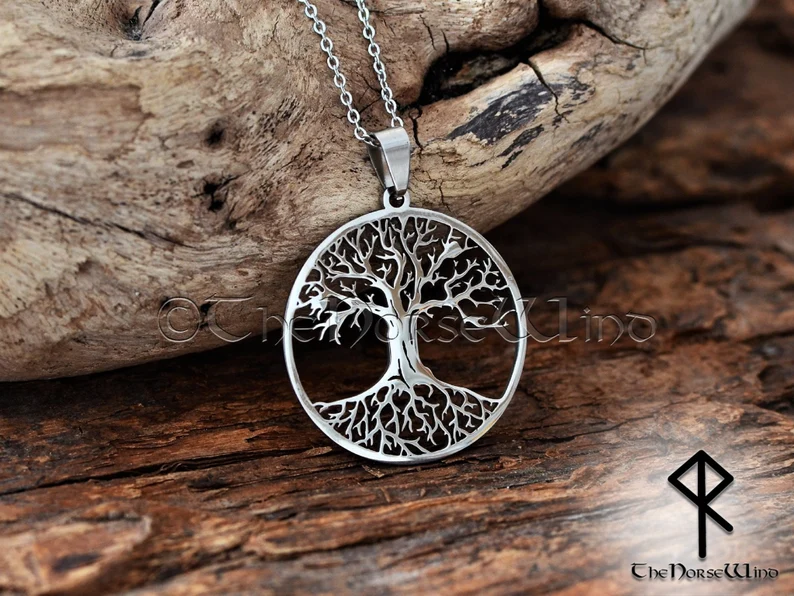
What Does Yggdrasil Symbolize?
As the “World Tree”, Yggdrasil can be seen to symbolize lots of different concepts such as:
- Interconnectivity of the universe
- The natural order of things
- Destiny
- Prophecies
- A pathway to other worlds or the afterlife as the Yggdrasil is believed to connect all the different realms in Norse mythology, including its afterlives such as Valhalla and Hel.
Yggdrasil is often viewed as a Tree of Life – something that’s common in almost all ancient cultures and religions. And while Yggdrasil doesn’t fit this standard Tree of Life mold, it can be seen as such as it binds the universe.
Additionally, nowhere in Norse myths is it said that Yggdrasil is destroyed during Ragnarok – the prophesied end of the world in Norse mythology. In fact, most scholars believe, that Yggdrasil is meant to survive Ragnarok and start a new cycle of life after it.
Yggdrasil and the Warden Trees
All Norse cultures revered trees, from the ancient Germanic tribes, through to the people in northern Scandinavia, and to the Anglo-Saxons in the Albion.
They held warden trees in especially high regard as they were believed to be bringers of luck and guardians of the people. These trees were usually ash, elm or linden and were protected by the people.
Such trees were so respected that the ones who took care of them often took surnames related to the trees such as Lindelius, Linnæus, and Almén. Such warden trees were often planted on top of burial mounts and people commonly buried offerings in their roots as well.
Yggdrasil in Modern Culture
Yggdrasil is widely depicted in modern representations of Norse myths. Modern paintings, wooden carvings, statues, bronze reliefs on doors, and others are often seen in museums and art galleries.
What’s more, Yggdrasil has also taken root (pun intended) in modern pop-culture similar to many other symbols and elements of Norse mythology. For example, the Hollywood blockbuster series MCU (Marvel Cinematic Universe) represented Yggdrasil as a “cosmic nimbus” connecting several different worlds.
Another famous example are the Warcraft and WoW (World of Warcraft) games which have the Teldrassil and Nordrassil world trees, which are very much modeled after the Norse Yggdrasil.
Wrapping Up
The Yggdrasil is the foundation and the basis of Norse mythology, through which all things are connected. It has also influenced many modern pop culture elements.




